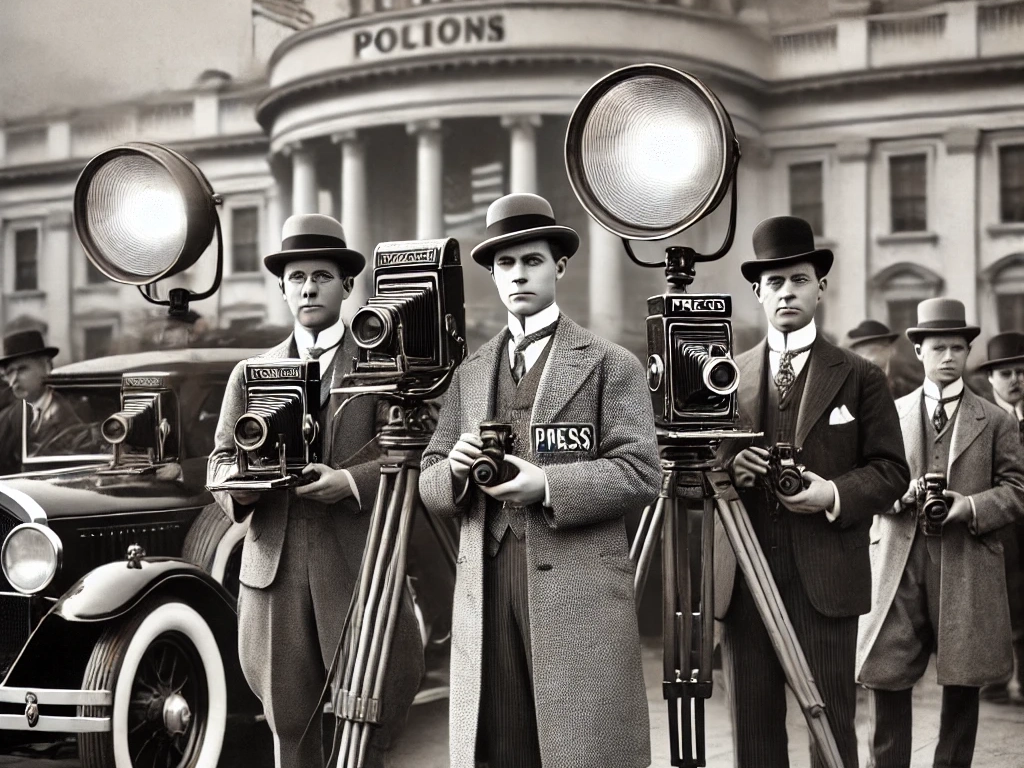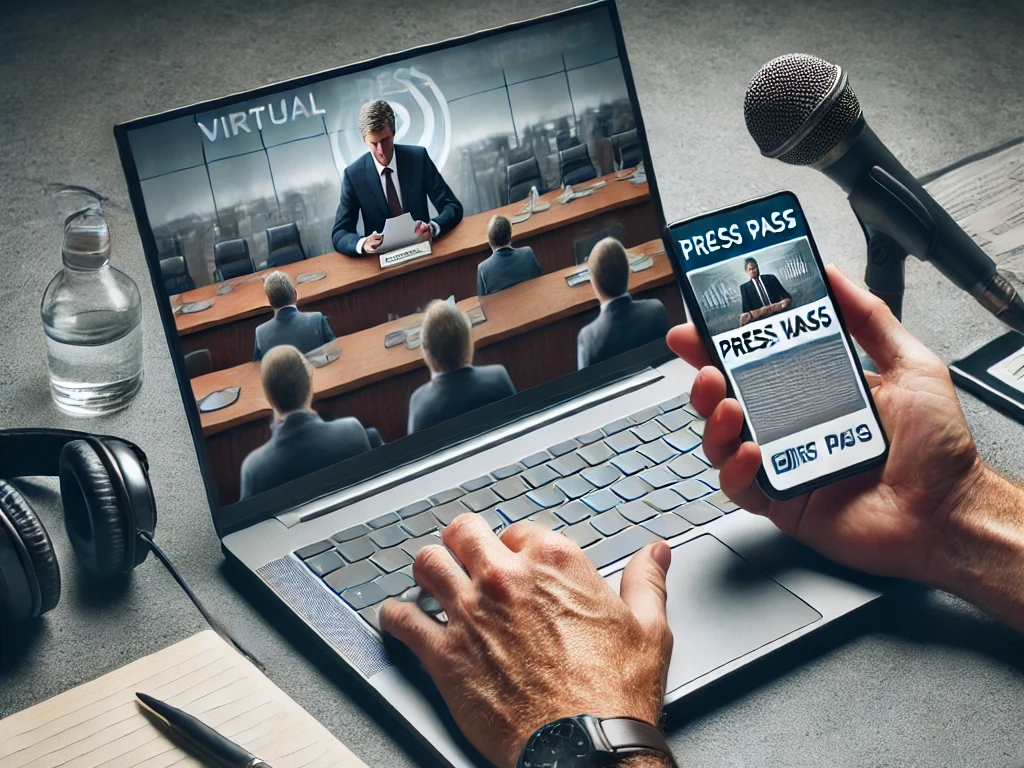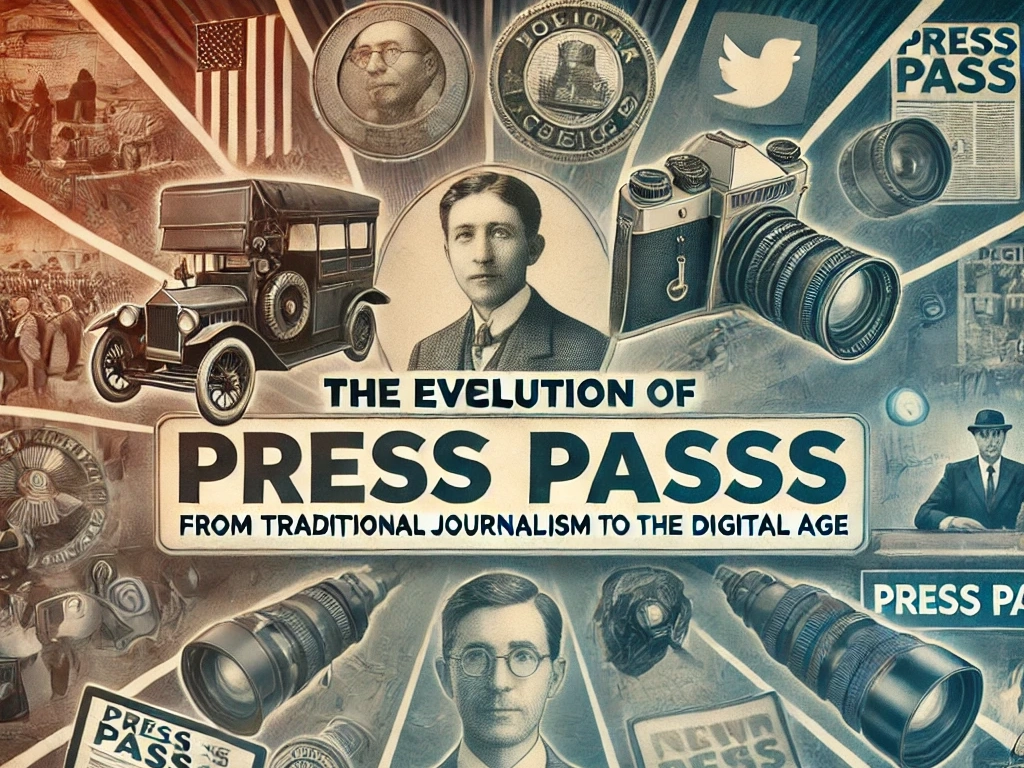The press card has long been a symbol of journalistic integrity, as it gives reporters access to critical events and ensures that they can do their job in the public interest. From the traditional newspaper reporters of the early 20th century to today’s digital journalists and content creators, the role and meaning of the press card has changed significantly.
This article explores how press cards have adapted over the years, from their origins in traditional journalism to the modern digital media landscape. We will explore how the press card remains an indispensable tool for journalists, even as the way news is collected and disseminated is changing in the age of social media, live streaming and digital platforms.
The origins of the press pass
The press card was originally a physical card granted to newspaper reporters, photographers, and broadcasters who needed access to protected areas, events, or interviews. In its simplest form, it served as an identification tool that confirmed a journalist’s authority to report on specific events.
In the early 1900s, journalists worked primarily for established newspapers or radio stations. The press cards were issued by news organizations or event organizers who ensured that the journalists represented trustworthy media. This system worked well at a time when media consumption was limited to print, radio, and eventually television.

The role of the press pass in traditional journalism
In the course of the 20th century, the press card became a powerful instrument. It granted reporters access to places such as political events, courtrooms, crime scenes, and even battlefields. More importantly, it strengthened a journalist’s credibility and provided them with protection from arrest or harassment while on the job. With a press card, journalists were often able to cross police lines, attend exclusive events, and give interviews that were otherwise inaccessible to the public.
Journalists in war zones or when reporting on unrest relied heavily on their press cards so as not to be confused with conflict participants or rioters. In some cases, a journalist’s press card became a lifeline that distinguished him from civilians or combatants, especially when he was trapped in the middle of dangerous situations.
However, the issuance of press cards was not without its challenges. In authoritarian regimes, press cards were strictly controlled, and journalists critical of the government were excluded from momentous events. Even in democratic societies, there were debates about which journalists “deserved” a press card and who had the authority to issue one.
The digital revolution and its impact on journalism
The rise of the internet and digital technologies at the turn of the 21st century has changed journalism in ways that were previously unimaginable. With the proliferation of blogs, independent news sites, and social media platforms, traditional journalism was on the verge of disruption. Suddenly, anyone with a camera or smartphone could cover the news, by passing the editorial processes of traditional media.
The role of the press card began to shift during this time. While established media companies continued to issue accreditations, unpracticed players – such as bloggers, freelance journalists, and online content creators – began to demand recognition and access.
The Internet also brought new challenges for journalists. With the rapid spread of digital content, verification has become increasingly important. Fake news, citizen journalism, and the emergence of unverified sources began to dilute the once clear distinction between professional journalism and amateur reporting. Thus, the press card became more than just a tool to gain access – it became a symbol of credibility in an increasingly crowded and confusing media landscape.

The rise of digital press cards
With the transition of journalism into the digital age, the press card had to evolve accordingly. Digital press cards proved to be an alternative to conventional paper or plastic ID cards. These credentials often included a QR code or an online verification system that allowed event organizers and authorities to quickly confirm a journalist’s credentials.
For digital-first journalists working for online news outlets or creating independent content, the traditional press card system often proved restrictive. These journalists were looking for legitimacy and access, but many found that traditional gatekeepers such as government agencies or event organizers were reluctant to issue accreditations to those who were not affiliated with well-known media outlets. In response, organizations such as the United States Press Agency (USPA) emerged to offer press passes to freelancers, bloggers, and independent journalists. The USPA recognized the need for a more comprehensive, inclusive approach to press qualification in a world where journalism was no longer the sole domain of large news organizations.
Many news outlets now issue digital press cards that can be stored on smartphones or other devices. These digital passes offer several benefits, including easier verification, reduced costs, and the ability to instantly update or revoke access. In some cases, press passes are linked to digital portfolios, allowing event organizers to verify a journalist’s past work before granting access.
The role of social media and the “citizen journalist”
Social media platforms such as Twitter, Facebook and Instagram have created a new generation of journalists – the “citizen journalists”. These people report on events in real-time and often only use a smartphone and a social media account. Citizen journalists have published important news, from protests to natural disasters, sometimes before the traditional media even entered the scene.
The rise of citizen journalism has sparked debates about the relevance of the press card. If everyone can report on the news, should everyone have access to the areas closed to the press? The answer is not simple. While citizen journalists play a valuable role in modern journalism, press cards are still indispensable for those who report on events in an official capacity.
A key difference between professional journalists and citizen reporters is accountability. Journalists who hold a press card are usually held to professional standards, including ethical guidelines, editorial oversight, and fact-checking. The press card serves as a reminder that the journalist represents more than just their opinion – they represent an organization that is committed to accuracy, fairness, and responsibility.

Today’s press card: a tool for access and credibility
In today’s media landscape, the press card is still an indispensable tool, but its role has expanded beyond access to events. It is now a sign of professional integrity in an era of misinformation and “fake news”. For journalists, especially freelancers and digital content creators, a press card from a reputable organization like USPA can be the difference between being recognized as a credible source or being dismissed as a hobbyist or blogger.
USPA’s press cards are widely recognized and respected, providing journalists with access to a variety of events, from political summits to entertainment galas. More importantly, they serve as a seal of approval that signals that the wearer adheres to professional journalistic standards.
For digital journalists, the press card also serves as an instrument for networking. Being recognized as a legitimate journalist allows them to build relationships with promoters, fellow journalists, and important sources, all of which are essential to creating high-quality, impactful content.
The future of the press card
As journalism evolves, so will the press. We are likely to see more innovation in digital proofs, including biometric verification or blockchain technology, to prevent fraud and ensure transparency. Virtual events, which have become increasingly popular during the COVID-19 pandemic, can also change the way press passes are used. Journalists may need access to online platforms and exclusive virtual spaces instead of physical venues.
Despite these changes, the core function of the press card remains the same: it continues to provide journalists with the access they need to do their job, while maintaining standards of accuracy, accountability, and credibility.

Inference
The press card has undergone significant changes since its introduction in the early 20th century. From its origins as a simple identification tool for newspaper reporters to its current role as a digital ID card for freelancers and online content creators, the press card has evolved in parallel with journalism itself. At a time when anyone can cover the news, the press pass serves as a symbol of professionalism, access, and credibility.
For journalists in the digital age, the press card remains an indispensable tool that provides access to events and interviews, protects them in conflict zones and distinguishes them from the flood of unverified sources that dominate social media. As journalism continues to adapt to modern technologies and platforms, the press pass will evolve to ensure that journalists can live up to their essential role in informing the public and the accountability of those in power.
